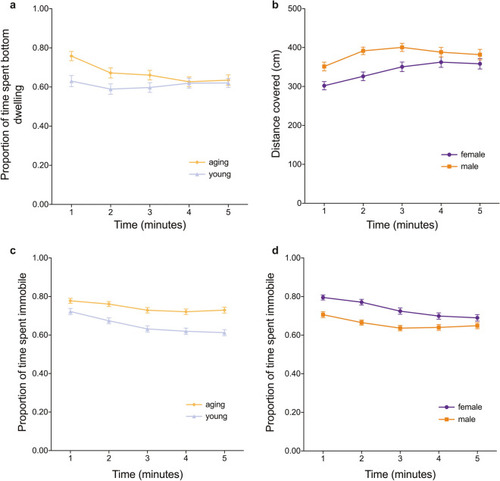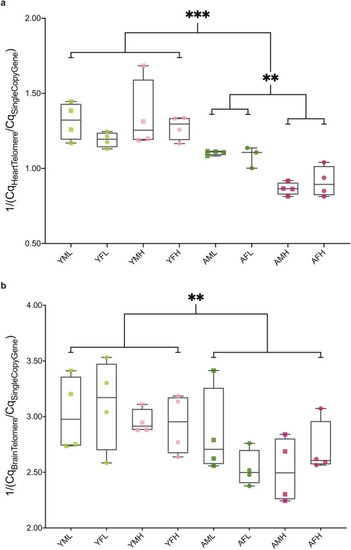- Title
-
Stress reactivity elicits a tissue-specific reduction in telomere length in aging zebrafish (Danio rerio)
- Authors
- Evans, J.R., Torres-Pérez, J.V., Miletto Petrazzini, M.E., Riley, R., Brennan, C.H.
- Source
- Full text @ Sci. Rep.
|
Zebrafish selected for molecular analysis based on behaviourally determined stress reactivity. ( |
|
Results of the novel tank diving test. ( |
|
Analysis of HPI axis-associated gene expression within brain extracts by qPCR validates behaviourally determined stress reactivity. qPCR analysis of the HPI axis-associated genes, corticotropin-releasing factor ( |
|
Telomere length shortens with age in both heart and brain and correlates with stress reactivity in the heart, but not brain, of zebrafish. ( |




